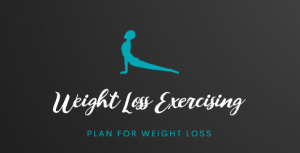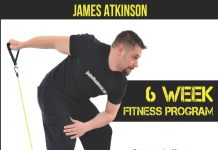Are you tired of slogging away on the treadmill for hours, wondering if there’s a more efficient way to burn calories and improve your cardiovascular fitness? In the ongoing debate between interval training and steady-state cardio, it can be difficult to determine which approach is truly superior. While both methods have their merits, understanding the differences and benefits of each can help you make an informed decision about which is better suited to your fitness goals. Whether you’re looking to maximize calorie burn, increase endurance, or simply shake up your workout routine, this article will guide you through the pros and cons of interval training and steady-state cardio, helping you find the perfect fit for achieving your fitness ambitions.
Review contents
Benefits of Interval Training
Increased calorie burn
Interval training is an excellent way to maximize calorie burn during your workouts. By alternating between periods of high-intensity exercise and short rest periods, you can significantly increase your heart rate and metabolic rate. This elevated heart rate and metabolism help your body burn more calories, both during and after your workout. So, if you’re looking to shed those extra pounds, interval training can be an effective tool to achieve your weight loss goals.
Improved cardiovascular health
Interval training is known for its ability to improve cardiovascular endurance. When you engage in high-intensity exercises during the “work” periods of your interval training, your heart has to work harder to meet the increased demand for oxygen and nutrients. This continuous challenge strengthens your heart, increases its efficiency, and improves blood circulation throughout your body. Over time, interval training can help reduce the risk of heart disease, lower blood pressure, and improve overall cardiovascular health.
Time efficiency
One of the biggest advantages of interval training is its time efficiency. The high-intensity intervals followed by short rest periods create a highly effective workout in a shorter amount of time. You can accomplish more in a 20-minute interval training session than you would in a 60-minute steady-state cardio session. For those with busy schedules, interval training allows you to squeeze in a challenging and effective workout in a shorter amount of time.
Increased metabolism
Interval training not only burns calories during your workout but also has a lasting impact on your metabolism. The intense bursts of exercise during the “work” periods increase your metabolic rate, meaning you continue to burn calories even after your workout is over. This effect, known as excess post-exercise oxygen consumption (EPOC), can last for hours after your workout, allowing you to continue burning calories and fat. By incorporating interval training into your fitness routine, you can boost your metabolism and reap the benefits of increased calorie burn even at rest.
Benefits of Steady State Cardio
Improved endurance
Steady state cardio, on the other hand, focuses on performing continuous exercises at a moderate intensity level for an extended period. This type of cardio helps improve your endurance by gradually increasing the duration of your workouts. As you continue to engage in steady state cardio on a regular basis, your cardiovascular system adapts, allowing you to perform activities for longer periods without feeling fatigued. Improved endurance is not only beneficial for athletes and runners but also for everyday activities that require sustained energy.
Increased fat burning
While interval training is known for its ability to burn calories effectively, steady state cardio shines in terms of fat burning. When you engage in steady state cardio exercises such as jogging or cycling, your body primarily uses fat as a fuel source. This sustained workout at a moderate intensity allows your body to tap into stored fat reserves, helping you lose unwanted body fat over time. If your primary goal is fat loss, incorporating steady state cardio into your workout routine can be a valuable tool.
Lower risk of injury
Another advantage of steady state cardio is its lower impact on your joints and muscles. The moderate intensity and continuous nature of these exercises place less stress on your body compared to the high-intensity intervals of interval training. This lower impact reduces the risk of injury, making steady state cardio a suitable option for individuals recovering from injuries or those who prefer a gentler approach to exercise.
Effectiveness for Weight Loss
Interval training
Interval training has been hailed as an effective method for weight loss. The combination of high-intensity exercise and rest periods creates an afterburn effect, where your body continues to burn calories even after you’ve finished working out. This increased calorie burn, along with the metabolic boost from interval training, can help you achieve weight loss goals more efficiently.
Steady state cardio
While steady state cardio may not have the same immediate calorie-burning effect as interval training, it is still effective for weight loss. By engaging in longer aerobic exercises at a moderate intensity, you can create a calorie deficit over time, leading to weight loss. Steady state cardio is also a sustainable form of exercise that can be easily incorporated into your daily routine.
Effectiveness for Cardiovascular Health
Interval training
Interval training is highly effective for improving cardiovascular health. The intense bursts of exercise force your heart to work harder, increasing its strength and efficiency. This type of training helps lower resting heart rate, improve blood flow, and enhance overall cardiovascular endurance. It is particularly beneficial for those looking to improve their cardiovascular fitness and reduce the risk of heart disease.
Steady state cardio
Steady state cardio is also effective for cardiovascular health. By engaging in continuous moderate-intensity exercises, you can improve your heart’s ability to pump blood, lower your resting heart rate, and strengthen your cardiovascular system. This form of exercise is especially beneficial for individuals looking to enhance their overall heart health and reduce the risk of cardiovascular diseases.
Muscle Building and Strength
Interval training
Interval training may not be the first thing that comes to mind when you think of building muscle and strength. However, it can be a valuable tool to supplement your strength training routine. The high-intensity exercises during the work intervals challenge your muscles and can contribute to increasing lean muscle mass. Additionally, the short rest periods keep your heart rate elevated, providing cardiovascular benefits while still engaging your muscles.
Steady state cardio
Steady state cardio is not primarily focused on building muscle and strength, but it can still have a positive impact on your overall fitness. It helps improve your muscular endurance by challenging your muscles for an extended period. While it may not be as effective as strength training for muscle building, incorporating steady state cardio into your routine can help maintain your muscle mass and improve your overall fitness level.
Factors to Consider in Choosing a Cardio Workout
Fitness level
Your current fitness level is an important factor to consider when choosing a cardio workout. If you’re just starting or have a lower fitness level, steady state cardio may be a better option as it allows you to perform activities at a moderate intensity for a longer duration. On the other hand, if you’re already in good shape and looking to spice up your routine, interval training can provide a challenging workout to continue progressing.
Goals
Identifying your fitness goals is crucial in selecting the right cardio workout. If weight loss is your primary goal, both interval training and steady state cardio can be effective tools. However, if you’re looking to improve cardiovascular endurance or enhance muscle building, understanding which type of cardio aligns with your goals can help you make an informed decision.
Time availability
Consider how much time you can dedicate to your workouts. If you have limited time, interval training offers a time-efficient way to get a challenging workout in a shorter duration. On the other hand, if you enjoy longer workouts or have more time available, steady state cardio can be a great option for longer sessions.
Preference
Ultimately, your preference and enjoyment play a significant role in sustaining a consistent exercise routine. Choose a cardio workout that you genuinely enjoy and find motivating. It could be the fast-paced intensity of interval training or the calming rhythm of steady state cardio. By selecting a workout you enjoy, you’re more likely to stick with it in the long run and reap the numerous benefits it provides.
How to Incorporate Interval Training
Proper warm-up
Before diving into any high-intensity interval training, it’s crucial to properly warm up your body. A warm-up session should consist of dynamic stretches, mobility exercises, and a few minutes of light cardio to increase blood flow to your muscles and prepare your body for the demands of the workout. This will help prevent injuries and optimize your performance during the interval training session.
Work-to-rest ratio
When incorporating interval training, it’s important to determine an appropriate work-to-rest ratio. This ratio defines the duration of your high-intensity exercise and the length of your rest or recovery period. The specific ratio will depend on your fitness level and goals. For beginners, starting with a 1:2 ratio (e.g., 30 seconds of work followed by 1 minute of rest) can be a good starting point. As you progress, you can decrease the rest periods and increase the duration of the work intervals to continue challenging your body.
Exercise selection
Choose exercises that engage multiple muscle groups and elevate your heart rate during the work intervals. This could include exercises such as burpees, jumping jacks, mountain climbers, or sprints. It’s important to vary your exercise selection to prevent boredom and ensure a balanced full-body workout.
Progressive overload
To continue making progress with interval training, it’s important to incorporate progressive overload. This involves gradually increasing the intensity or duration of your work intervals, reducing the rest periods, or increasing the number of intervals. By continuously challenging your body, you can avoid plateaus and continue seeing improvements in fitness and performance.
How to Incorporate Steady State Cardio
Duration and intensity
When incorporating steady state cardio into your routine, the duration and intensity can vary depending on your goals and fitness level. To improve cardiovascular endurance, aim for longer sessions at a moderate intensity, such as jogging or cycling for 30-60 minutes. If your goal is fat burning, maintaining a steady pace and heart rate within the target zone (around 60-75% of your maximum heart rate) can be effective.
Variety of activities
To keep steady state cardio interesting and prevent boredom, incorporate a variety of activities. This can include walking, running, cycling, swimming, or using cardio machines such as the elliptical or rowing machine. By switching up your activities, you engage different muscle groups and prevent overuse injuries.
Proper form and technique
Proper form and technique are crucial in any cardio exercise. This helps prevent injuries and ensures that you’re getting the most out of your workouts. Whether it’s maintaining a good running posture or using the correct cycling form, focusing on proper technique will not only make your workouts more effective but also safer.
Combining Interval Training and Steady State Cardio
Benefits of combining
Combining both interval training and steady state cardio can offer the best of both worlds. Interval training provides the intensity and calorie-burning benefits, while steady state cardio enhances endurance and fat burning. By incorporating both types of cardio into your routine, you can effectively challenge your body, improve overall fitness, and avoid plateaus in your progress.
How to combine
To combine interval training and steady state cardio, you can alternate between workout sessions throughout the week or within a single session. For example, you could devote three days to interval training and two days to steady state cardio, or you could include intervals within your steady state cardio session by adding short bursts of high-intensity exercises. Experiment with different combinations and find what works best for your goals, schedule, and preferences.
Conclusion
In the battle of interval training vs. steady state cardio, there is no definitive winner. Both types of cardio workouts offer unique benefits, and the best choice depends on your individual goals, preferences, and fitness level. Interval training is excellent for increasing calorie burn, improving cardiovascular health, and boosting metabolism. On the other hand, steady state cardio helps improve endurance, increases fat burning, and carries a lower risk of injury. Factors such as fitness level, goals, time availability, and personal preference should guide your decision in choosing a cardio workout. You can also incorporate both interval training and steady state cardio to enjoy the benefits of both types of workouts. Ultimately, the key is to find a cardio routine that you enjoy and can consistently incorporate into your lifestyle to achieve your desired fitness outcomes.




























